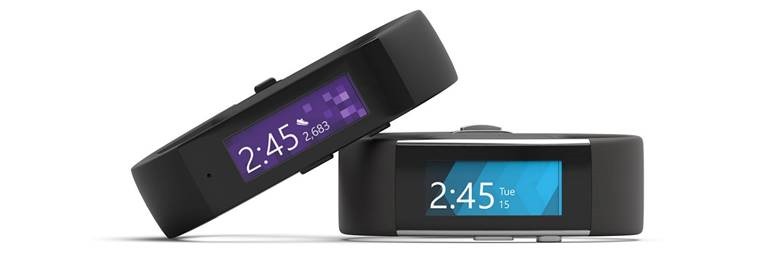Developer update for Microsoft Band
It’s been a year since we launched Microsoft Band and Microsoft Health. We’ve made a commitment to the developer community to make our ecosystem open and accessible on every platform. Since then, we delivered three developer tools around our devices and services: Microsoft Band SDK, Microsoft Band Web Tiles, and Microsoft Health Cloud APIs. And as our devices and services evolve, we’re making continuous improvements to these tools.
With the recent announcement of the new Microsoft Band 2, we released updates to the Band SDK to add support for the new device. We’ve also released the official bits of Microsoft Band Web Tiles. Its preview bits went out in June this year. The new updated bits are available for download on our developer portal.

Updated Band SDK for Microsoft Band 2
In addition to enabling the existing SDK functionalities in Microsoft Band 2, we’ve enhanced the existing Microsoft Band SDK to take advantage of new sensors and specs of the new device. Here are the top enhancements:
- Five new sensor-based subscriptions for Microsoft Band 2. In addition to nine sensor-based subscriptions exposed for both Microsoft Band and Microsoft Band 2, the updated SDK exposes five additional subscriptions that are only available for Microsoft Band 2: galvanic skin response (electrical conductivity of the skin in kohms), barometer, altimeter, RR interval (time between heart beat peaks), and ambient light.
- Creation of PDF 417 barcodes with alpha/numeric data on Microsoft Band 2. The previous SDK supported only 0-9 digits. The updated SDK extends support for more ASCII characters. For details, see the Microsoft Band SDK documentation.
- Increased the icon limits for tiles on Microsoft Band 2. The updated SDK increases the icon limit for tiles from 8 to 13 for only Microsoft Band 2.
Download the latest update for the Microsoft Band SDK to start using these new features.
Microsoft Band Web Tiles
We launched a preview of the Microsoft Band Web Tiles in June this year. Now we’re excited to share the official release of Microsoft Band Web Tiles with more stable bits and new enhancements. Microsoft Band Web Tiles make it simple to deliver relevant information to the Band from virtually any data source accessible through the web. Developers have to write web tile code only once to support multiple mobile platforms (iOS, Android, and Windows) because the Microsoft Health app takes responsibility for doing the rest—installing the web tile to the Band, accessing web resources for content, extracting and formatting the content, and then delivering that content to the associated web tile on the Band.
In addition to stabilizing the preview bits that were released in June of this year, we added new web tile functionalities based on the feedback we’ve received. Here are the top things that we added to this release:
- Creates simple conditions that trigger sending notification to web tiles. You can now make web tiles more informative for your users by sending notifications to the band whenever the web data meets predefined conditions. Want a weather web tile that notifies you when there’s a high chance of rain? You can create one now.
- Extracts data from a web service that requires basic HTTP authentication. Until now, web tiles supported only publicly available web content. With the new update, web tiles can now support authenticated resources, opening up the opportunity to make the web content more secure and personalized.
Web tiles have no dependency on Band device version: the same web tile code works on both Microsoft Band and Microsoft Band 2.
For more information, visit the Microsoft Band Web Tiles developer website to read the updated developer documentation and download the sample web tiles. You can start creating new web tiles today using the Web Tile Authoring tool.
Feedback
We are making continuous improvements to our developer tools based on feedback. So please share your suggestions on the Microsoft Band Health UserVoice page. You can also vote on existing suggestions for improvements to any of our tools. You can also contact us through healthms (at) microsoft.com.
|
|
Maria Kang, Program Manager, Microsoft Band and Microsoft Health Maria Kang is on the Personal Devices team in Redmond, the creators of Microsoft Band and Microsoft Health. Since joining Microsoft in 2010, Maria has worked as a program manager in developer experience team on a number of Windows releases from Windows 8 through Windows 10. Most recently, she joined the Microsoft Band team to continue enhancing the developer ecosystem for Microsoft Band and Microsoft Health. She has a BS in Electrical Engineering. |


 Light
Light Dark
Dark
0 comments